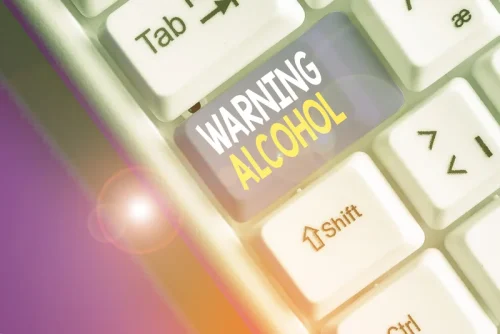
Activation of spinal cord microglia, mGlu5 spinal cord receptors, and hypothalamic-pituitary-adrenal axis appear to be implicated in this process [92,93,94,95,96,97]. Oxidative stress also leads to the indirect damage of nerve fibers via the release of free radicals alcohol neuropathy stages and proinflammatory cytokines with protein kinase C and ERK kinase phosphorylation [98,99,100,101]. Besides, ALN is characterized by insulin and insulin-like growth factor (IGF) resistance, which results in impaired trophic factor signaling [102, 103].

Natural history
It’s not completely clear why some people are more prone to this complication than others. Constant pain in the hands or feet is one of the most bothersome aspects of alcoholic neuropathy. As the condition progresses, the pain may vary in intensity, sometimes diminishing for months before worsening again. Once a person has stopped drinking, they can receive continued care for their nerve damage in addition to treatment for alcohol addiction. Alcohol use leaves no one immune to nerve damage and other health-related issues.
How Long Does Alcoholic Neuropathy Take To Go Away?
- The prevalence of alcoholic cardiomyopathy appears to be similar among males and females; however, males present a higher disease burden [132, 133].
- These studies correlated the autonomic alterations with the total alcohol dose and the number of doses multiplied by the consumption period (El-Mas and Abdel-Rahman, 2013; de Zambotti et al., 2015).
- Keep moving forward, one day at a time, and appreciate the hard work you put in along the way.
- Our writers include physicians, pharmacists, and registered nurses with firsthand clinical experience.
- In general, it takes years for alcoholic neuropathy to develop, so a long-standing history of heavy alcohol use is typical.
Four studies addressed the management of patients with alcohol-related peripheral neuropathy. These studies addressed abstinence from alcohol consumption and administration of vitamins. The available data addressing the role of hepatic dysfunction is presently inconclusive. It is possible that hepatic dysfunction and alcoholic toxicity each cause neuropathy independently, and that there is frequently overlap between the two. It may also be that comorbid hepatic dysfunction is a risk factor for alcohol-related peripheral neuropathy. Further studies are required to develop a greater understanding of the interaction these entities.
Symptoms Of Alcoholic Neuropathy
PCT seems to be valuable due to the correlation between prolongation of pupil oscillation and exacerbations of cardiovascular symptoms which presents the colinear involvement of parasympathetic division of ANS. During the initial stages of ALN, the disease may appear asymptomatic and demonstrable only on electroneurographic investigation [71, 111, 112]. Because ALN is a length-dependent axonopathy, it manifests mainly in a “stocking-glove” form, affecting the lower extremities at the beginning [28, 113]. The main symptoms of ALN include dysesthesia, paresthesia, numbness, and pain in the lower extremities which progressively reach higher parts of the body [114,115,116,117]. The pain is described as burning, cramp-like, or itching; also, a common symptom is a subjective feeling of cold in both feet [118,119,120,121,122,123]. The symptoms deteriorate through touch and pressure which intensify pain while standing or walking [124].

Preventing alcoholic neuropathy is fundamentally about managing our alcohol intake. It’s about understanding the role alcohol plays in our lives and finding healthier alternatives to cope with stress, socialize, and relax. However, this seemingly innocuous sensation may be an early warning sign of a condition known as alcoholic neuropathy, a lesser-known but significant consequence of long-term alcohol use. Both function and integrity of the afferent fibers can be inferred by the tactile response that https://ecosoberhouse.com/article/choosing-sobriety-gifts-10-great-ideas-to-consider/ is impaired in neuropathic conditions. To evaluate the tactile sensitivity of animals, the sensibility test with the Von Frey monofilaments (Touch Test™ Sensory Evaluator Kit of 20 – Leica Biosystems, Germany) was conducted, which is inexpensive and used in the clinical settings as well. These monofilaments were used in an increasing order of thickness (starting at 6 g), on the plantar surface of the pelvic limb of the animal only when it was immobile and standing on the four limbs on a mesh floor.

Some individuals may experience significant improvement in symptoms within weeks to months, especially with early intervention and consistent treatment. However, for others, especially those with severe or long-standing neuropathy, some symptoms may persist indefinitely. Long-term management focuses on symptom relief, preventing further nerve damage, and maintaining a healthy lifestyle to support nerve function. Following detox, comprehensive rehabilitation programs, like those offered at Resurgence Behavioral Health, provide the necessary support and treatment to address the psychological aspects of addiction. These programs include therapy, counseling, and education on substance abuse and its impacts. For those with alcoholic neuropathy, rehabilitation also focuses on managing and treating the nerve damage, incorporating physical therapy, nutritional counseling, and strategies to prevent further nerve injury.
- Alcoholic neuropathy signs and symptoms can progress gradually and are usually subtle at first.
- Motor nerves are the nerves responsible for all voluntary skeletal and somatic movement such as moving the leg or arm.
- The dissection of the sciatic nerves was performed at the origin of the nerve between L5 and S1 segments to tibiofibular bifurcation.
- Patients with alcoholic neuropathy typically present with a history of chronic consumption of alcohol and an insidious onset of distal lower extremity paresthesias, dysesthesias, or weakness.


